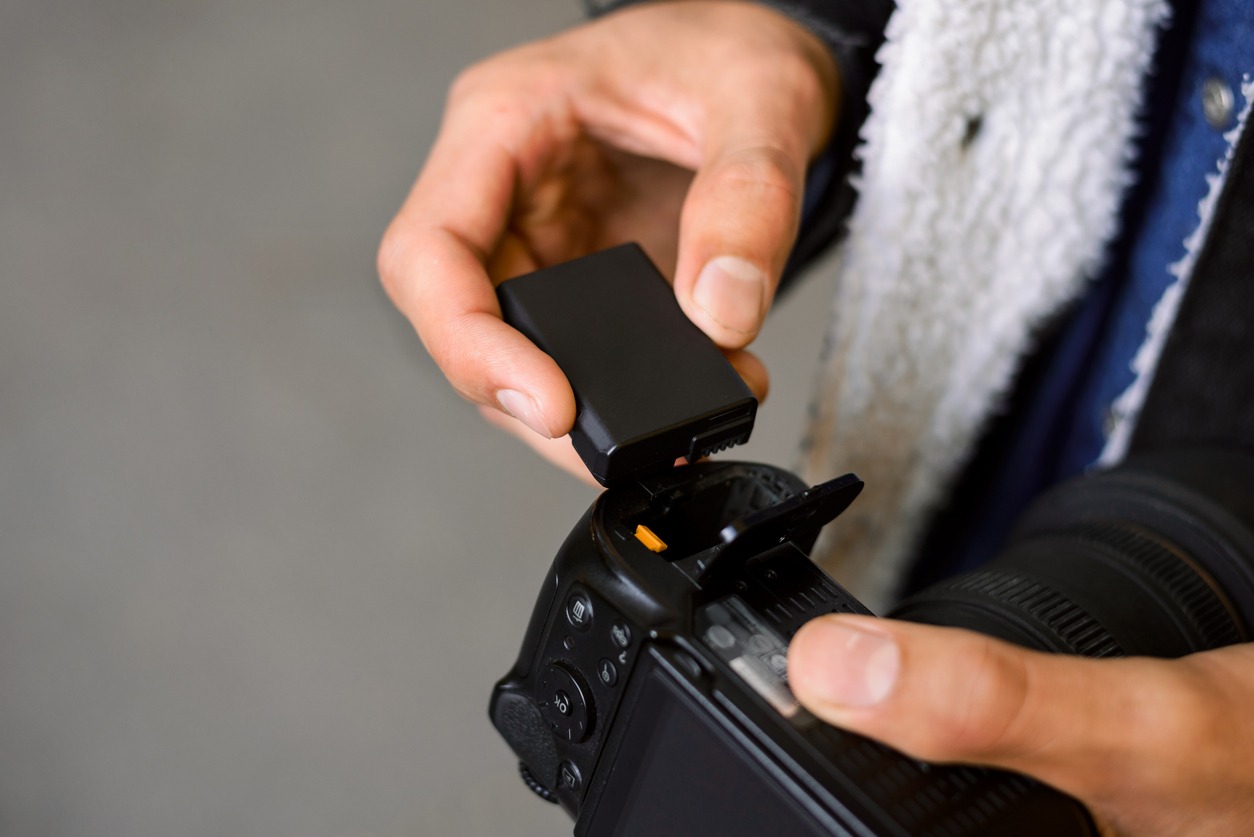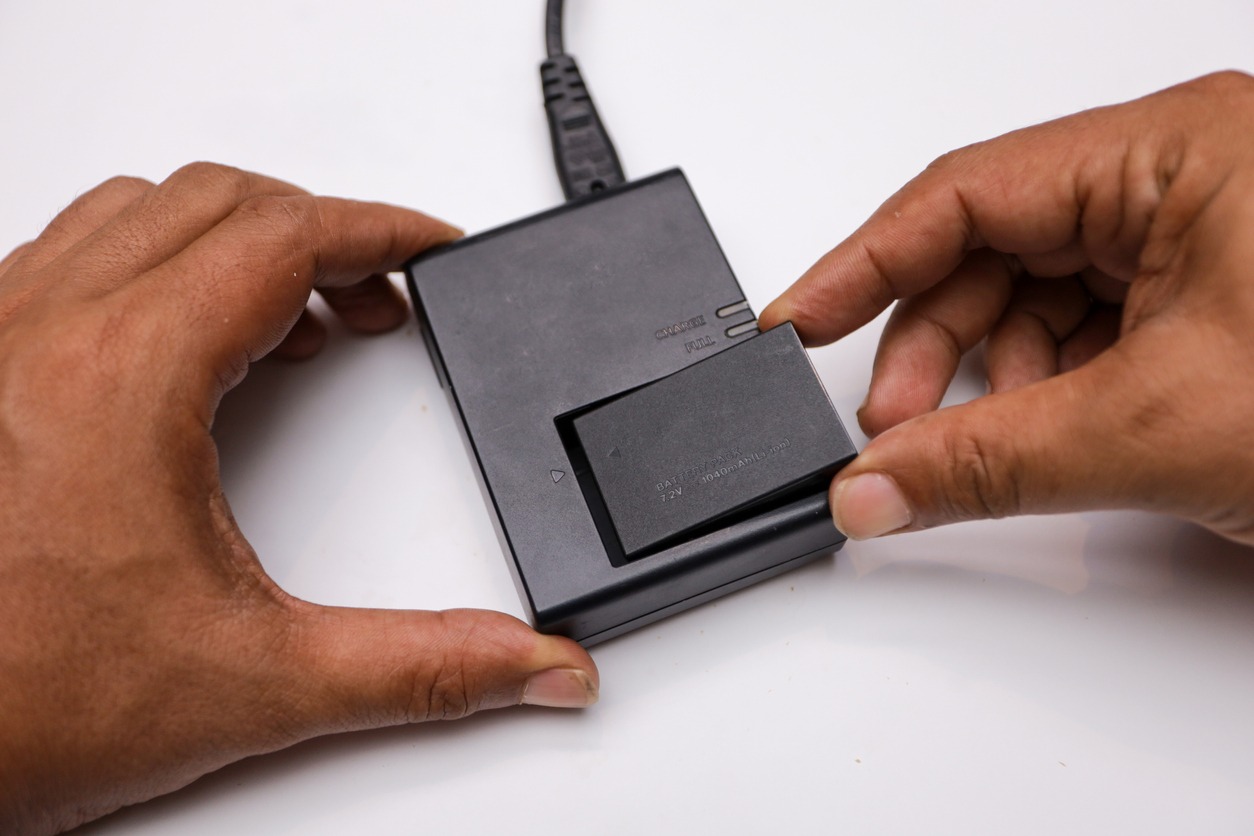When shooting outdoors, it is essential that you have power if your camera runs out of charge. If you are prone to taking your camera in the middle of nowhere, having portable power is a game-changer. It allows you to use your camera for longer and get all those amazing shots without your camera running out of charge. Although you can bring many batteries, portable power options allow you to recharge your batteries and keep reusing them. It essentially increases the time you can spend taking pictures or filming videos.
Since cameras require a lot of power to work, your power option must be capable of handling it. There are many different kinds of power options available that you can choose from. Depending on your camera and how much battery it uses, one might be more suitable for you than another, so you must know all the different types.
What Can You Use To Power Your Camera?
Most cameras use batteries, but they do not have a very long life and can run out while you are in the middle of filming and taking photographs. If you are at home or in a studio, then it is pretty easy to charge or replace the batteries. Still, if you are out, then there are only so many batteries that you can carry. In such situations, it is crucial that you have a power option available and on hand so that you can charge your camera.
Here are a few power options that you can use indoors and outdoors to charge your camera and power your lighting kit so that you can use them for as long as you want.
AC Charger
An AC charger is more commonly known as a wall charger that you can plug into a power outlet to charge your devices. They are pretty straightforward to use, and most cameras come with their own AC adapters that you can plug into the wall. Using these, you can charge your camera if it has an inbuilt battery or charge the battery separately. The primary purpose of these chargers is to convert alternating current that is coming from a wall outlet into direct or DC current that can be used by your device.
Depending on the kind of port your camera has, there are various types of wall chargers. They are split into three groups: single-port, dual-port, and multi-port. Most single-port chargers utilize a USB-C port, while older models have a traditional USB-A port. They also come in various power outputs, usually rated in watts (W). Single-port chargers are usually 20-30W, but double or multi-port chargers are much stronger and have a wattage of 60 to 100W.
When purchasing a wall charger for your camera, you must consider how many devices you will be charging. Also, whether you need USB-A, USB-C, or any other port. You should also remember that if you purchase a dual port, the wattage will be shared when multiple devices are connected to it.
V-Mount Batteries
V-mount batteries are rechargeable battery packs with a specific mount that allows them to be connected to photographic and video equipment. The device’s name comes from the shape of the locking plate used to attach the battery to the device, and it is the shape of a V.
Sony originally developed V-mount batteries, but they have now become a standard for all kinds of photography equipment. You can use them to power cameras, displays, microphones, lighting, and other devices. This makes them a perfect power option for photographers and videographers.
V-mount batteries are an incredibly reliable way to power devices when no central power is available. This device is so powerful that you can use it to control multiple devices, meaning you won’t need to worry about carrying many batteries on a photography excursion. You can simply take one or two batteries and use them alternatively.
Before purchasing, you need to be aware of a few drawbacks to v-mount batteries. Their biggest downside is that they are large and heavy, making them a little tricky to travel to. They also require a specific charger to charge, making them a little expensive to own.
When purchasing a v-mount battery, it is essential to consider its size and weight. Although they tend to be large, a few manufacturers make smaller-sized v-mount batteries that also come with additional features. Another thing to note is the number and kind of adapters included. If you plan to use the battery to charge various devices, you should purchase one with USB-A and USB-C ports.
Some v-mount batteries also come with an OLED display that lets you see battery information. This is an excellent added feature and can make using the battery easy. Ensure that it is bright so you won’t have trouble reading it during the day.
It is also crucial that they are built using high-quality materials. Fire-resistant polycarbonate outer covers are highly protective and the best options. Also, ensure that there are rubber protectors to protect the ports from dirt and dust. The battery should also handle extreme temperatures in case you want to take your battery to someplace with extreme temperatures.
Power Stations
A portable power station provides power when you are out and about. It allows you to explore and take photographs and videos in the middle of nowhere with no issue. Power stations are gas-free generators that use larger deep-cycle batteries, making it possible for you to charge your devices for days. It is so powerful that you can even use it for appliances.
When purchasing a power station, you must consider its capacity. The output capacity of a power station is measured in watt-hours, which indicates how much energy the battery can supply to the devices you plug into it. Essentially this reading tells you how many hours the battery will last if the power station is powering a device equivalent to 1 watt of energy.
The AC output is another important consideration. It determines the maximum energy load the power station can handle and is measured in watts. The maximum AC output is the wattage your devices connected to the power station cannot exceed. As a general rule of thumb, the more watt-hour your device is, the longer it will work and power your devices. Suppose you want to power multiple devices at once. In that case, you should ideally purchase a power station with a large output capacity.
The kind of battery your power station uses is also essential and can significantly impact its longevity, stability, safety, and environmental impact. Lithium Iron Phosphate batteries are incredibly safe and long-lasting compared to lithium batteries.
It is vital that you do not purchase a power station that has lithium batteries, as they deteriorate over time when used continuously and recharged. This process affects its battery cycle. A lithium battery can only withstand a limited number of cycles before showing a noticeable reduction in its overall capacity.
Solar Kits
If you are looking for a more environmentally friendly power source, solar power using a solar kit might be the best fit. They are incredibly efficient and can be an excellent option for outdoor photographers. Since they recharge using the sun, you can charge them while on the go.
Solar kits are solar panel bundles that come with all the necessary components needed to install and operate the solar energy system. A solar kit consists of a battery bank, power inverter, cables, mounting hardware, and solar panels.
There are two main types of solar panels, and choosing the right one is extremely important. These two kinds include an off-grid solar system and a grid-tiered solar system. The one you choose depends on how you intend to use it.
An off-grid solar kit is designed to provide you with uninterrupted electric power. These kits include a battery bank and other related accessories that can store electrical power that you can use later.
Grid-tiered solar grids have fewer components because they don’t have a backup. They are also easy to use and install. For long-term use, solar panel kits are great at saving money. They are also easily upgradable; if you maintain them well, they can last up to 40 years.
Power options for flash and lighting
A professional photographer doesn’t work with a camera alone. Lighting is a big factor when it comes to creating the perfect photos, so they either work with a shoe-mount, bracket-mount, or studio flashes. These flashes also need a power source to produce enough light, especially when shooting in an outdoor location.
| Name | Description |
| Cluster packs (For shoe mounts) | Cluster packs are the most basic option for external power for shoe-mount flashes. The external battery pack works with the flash unit’s internal batteries. This charges the capacitor and drives the light output to ensure reliable flash operation. |
| Monolight battery packs | Photographers who utilize larger and more demanding studio strobes while shooting on location have often relied on gas-powered generators. But if you don’t want to deal with it, there are other power options for both AC/DC monolights and power pack systems. |
| Pure sine wave inverter | A pure sine wave inverter takes battery power and converts it into a household AC current. It acts as an Ac outlet away from home, so you can plug in an AC adapter, AC moonlight or power pack, or any device that doesn’t exceed the specified wattage limitations of the inverter. When using this type of inverter, there are limitations on how many watt seconds you can run off an inverter. This applies especially when you’re using more than one flash head or power pack. |
FAQs
How can I power my DSLR without a battery?
If you don’t have a spare battery for your DSLR, you can plug it into an AC power adapter to help charge it.
What can you run on a 200-watt solar panel kit?
On a 200-watt solar panel kit, you can produce 700Wh and run small appliances on it. It can quickly provide enough energy to run a laptop, a table fan, a phone charger, and a camera.
What are the disadvantages of using a solar panel kit?
Suppose you are using a solar panel kit. In that case, you should read the instructions very carefully when building it because it is difficult, and not all kits come with specialized parts that you may need.
Conclusion
When shooting in remote locations having ample power is a must because, without it, your camera will run out of charge. Then you won’t be able to continue using it. There are many different options available that you can choose from. Solar panel kits, v-mount batteries, AC chargers, and power stations are a few.

